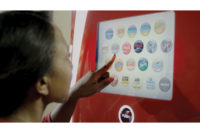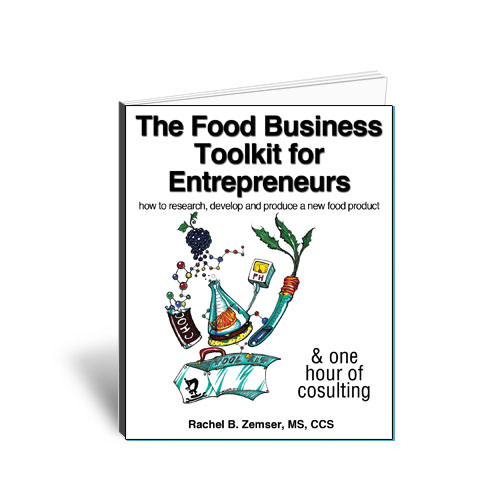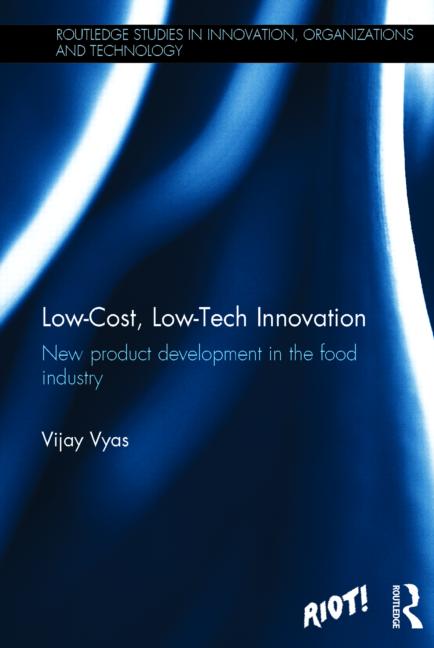Foodservice Manufacturers, Operators and Partners Collaborate for Innovation Best Practices
Executives from approximately 42 organizations will meet four times on 2018 to share best data and insights, best practices and more

Maybe it’s true that too many cooks spoil the broth. Then again, they say two heads are better than one. And when it comes to improving foodservice new product success—it truly does help to solicit input from all sides.
That’s exactly what’s happening this year with a Collaborative Innovation Best Practices board involving food and beverage processors, packaging and equipment manufacturers, restaurant operators, industry associations and data and marketing research consultants. Executives from approximately 42 organizations (see chart at bottom) will meet four times this year—in June, August, September and October—to share best data and insights, best practices and more.

"Innovation can’t happen in a vacuum. Whether we're solving for challenges in supply chain or culinary, we've learned over the years that it takes manufacturers and operators working collaboratively to meet the ever-changing consumer demands. We support collaborative innovation and believe this will bring a more lasting value for both operators and manufacturers."
—Larry Oberkfell, President & CEO, International
Foodservice Manufacturers Association
Spearheading the project is management consultant Kinetic 12.The Chicago-based firm works with foodservice food and beverage manufacturers, restaurant operators, distributors and private equity investors.
“Foodservice operators tell us there’s not enough collaboration and that they see too many barriers to true innovation,” says LeAnne Garoutte, a Kinetic 12 partner. “They say there are too many ‘me-too’ ideas and/or not enough new offerings that are grounded in consumer or operational insights or opportunities. Operators also feel as though suppliers are leaning too much on quantity and not quality, and that their new products don’t keep up with marketplace change. Last but not least, many new offerings are not operationally efficient and add too much complexity to a restaurant.”
Getting Down to Details
How and where do foodservice manufacturers and customers start to find solutions? Of course it begins with communications and face-to-face dialogue. Participating development board companies—manufacturers and operators alike—each were encouraged to send as many as three executives, including those involved in marketing, culinary development and R&D, and sales.
Project participants met in late June to begin defining the project’s scope and goals. This month brings the group’s second meeting about the collaborative process around innovation. Next month’s third meeting will involve shared, effective tools that all parties can use while working together. Finally, the group will host its last meeting this October to formally adopt and activate new innovation best practices. A follow-up step then will involve hands-on training so that all responsible personnel are equipped to take advantage of study findings and recommendations.
The initiative is inclusive of product, menu (core menu items and limited-time offers) packaging and equipment innovation. The goal is to ultimately provide tools, processes and best practice guidelines for building a more effective approach to collaborative innovation among trading partners.

"Cultivating collaborations to elevate food product development is at the very core of RCA. We believe that bringing Culinology—the blending of culinary arts and food sciences—to the table early better enables the foodservice industry to increase innovation, quality and speed-to-market. The table is set at the Collaborative Innovation Best Practices board, and we look forward to the innovations this important industry initiative will yield."
—Jason Behrends, Ph.D., CCS®,
President, Research Chefs Association
Accompanying the four meetings are expert presentations. These topics will include …
- “Where innovation Fails: Learning From the Past”
- “Culinology: The Evolution of Culinary Science”
- “Packaging & Equipment: Holistic Solutions to Innovation”
- “Concepting: Maximizing the Odds of Success”
Among those lending their expertise, data and insights are two associations: International Foodservice Manufacturers Association (IFMA) and the Research Chefs Association (RCA); and two additional consulting insights and data providers: Datassential and CSSI Marketing+Culinary.
“In the end, we believe there are several advantages to joining this project,” says Garoutte. “Our collaborative learnings and action points can help manufacturers identify bigger ideas for innovation, apply tangible new action steps, strengthen relationships with trading partners, improve speed to market, strengthen your competitive point of difference and fuel profitable new growth.”
Participants also can take part in a one-day training session (open to a broader number of employees) on the Collaborative Innovation best practices. There also will be opportunities for chain operators and manufacturers to conduct a one-day pilot workshops and put the best practices in place for current or future innovation opportunities.
INDUSTRY PARTICIPANTS BY SECTOR*
Manufacturer-Suppliers
- Aryzta
- Brill
- Bush's
- Cargill
- Conagra Brands
- Dawn Foods
- Georgia Pacific
- Griffith Foods
- High Liner Foods
- Impossible Foods
- Kerry Foodservice
- King & Prince Seafood
- Lamb Weston
- LBP Manufacturing
- McCain Foods
- Park 100
- Pilgrim's Pride
- S&D Coffee & Tea
- Tyson
- Welbilt
Foodservice Operators
- Burger King
- Captain D's
- Cinnabon
- CKE Restaurants
- El Pollo Loco
- Farmer's Fridge
- McAlister's Deli
- Pizza Hut
- QuikTrip
- Red Robin
- Romano's Macaroni Grill
- Shake Shack
- Sizzler
- Sonic
- TGI Friday's
- Wendy's
- Wendy's Quality Supply Chain
Associations & Data Resources
- Kinetic 12
- International Foodservice Manufacturers Association (IFMA)
- Research Chefs Association (RCA)
- CSSI Marketing+Culinary
- Datassential
*Participants as of July 20, 2018
For more information, contact LeAnne Garoutte at leanne@kinetic12.com or call Kinetic 12 at (312) 796-8613.
Originally appeared in the August, 2018 issue of Prepared Foods as Successful Innovation: Improve The Odds.
Looking for a reprint of this article?
From high-res PDFs to custom plaques, order your copy today!










